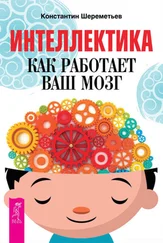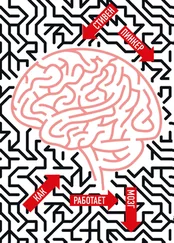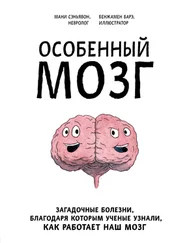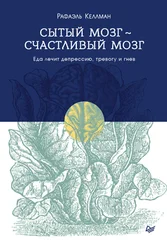University of Oklahoma. Institute of Group, R. and M. Sherif, Intergroup conflict and cooperation: The Robbers Cave experiment. Vol. 10. 1961: University Book Exchange Norman, OK.
Galbally, M., et al., The role of oxytocin in mother-infant relations: a systematic review of human studies. Harv Rev Psychiatry, 2011. 19 (1): p. 1–14.
Wan, M.W., et al., The Neural Basis of Maternal Bonding. PLOS ONE, 2014. 9 (3): p. e88436.
Magon, N. and S. Kalra, The orgasmic history of oxytocin: Love, lust, and labor. Indian journal of endocrinology and metabolism, 2011. 15 (7): p. 156.
Noriuchi, M., Y. Kikuchi, and A. Senoo, The functional neuroanatomy of maternal love: mother’s response to infant’s attachment behaviors. Biol Psychiatry, 2008. 63 (4): p. 415–23.
Schore, A.N., Effects of a secure attachment relationship on right brain development, affect regulation, and infant mental health. Infant mental health journal, 2001. 22 (1‐2): p. 7–66.
Ainsworth, M.D.S., et al., Patterns of attachment: A psychological study of the strange situation. 2015: Psychology Press.
Wiseman, H., O. Mayseless, and R. Sharabany, Why are they lonely? Perceived quality of early relationships with parents, attachment, personality predispositions and loneliness in first-year university students. Personality and individual differences, 2006. 40 (2): p. 237–248.
Blustein, D.L., M. S. Prezioso, and D. P. Schultheiss, Attachment Theory and Career Development. The Counseling Psychologist, 1995. 23 (3): p. 416–432.
Potard, C., et al., The relationship between parental attachment and sexuality in early adolescence. International Journal of Adolescence and Youth, 2017. 22 (1): p. 47–56.
Baumrind, D., The influence of parenting style on adolescent competence and substance use. The Journal of Early Adolescence, 1991. 11 (1): p. 56–95.
Haycraft, E. and J. Blissett, Eating disorder symptoms and parenting styles. Appetite, 2010. 54 (1): p. 221–224.
Baumrind, D., Current patterns of parental authority. Developmental psychology, 1971. 4 (1p2): p. 1.
Foster, A.D. and M. R. Rosenzweig, Learning by doing and learning from others: Human capital and technical change in agriculture. Journal of political Economy, 1995. 103 (6): p. 1176–1209.
Landry, S.H., et al., Does early responsive parenting have a special importance for children’s development or is consistency across early childhood necessary? Developmental Psychology, 2001. 37 (3): p. 387–403.
Kaplowitz, P.B., et al., Earlier Onset of Puberty in Girls: Relation to Increased Body Mass Index and Race. Pediatrics, 2001. 108 (2): p. 347.
Neubauer, A.C. and A. Fink, Intelligence and neural efficiency: Measures of brain activation versus measures of functional connectivity in the brain. Intelligence, 2009. 37 (2): p. 223–229.
Santos, E. and C. A. Noggle, Synaptic Pruning, in Encyclopedia of Child Behavior and Development, S. Goldstein and J. A. Naglieri, Editors. 2011, Springer US: Boston, MA. p. 1464–1465.
Carskadon, M.A., Patterns of sleep and sleepiness in adolescents. Pediatrician, 1990. 17 (1): p. 5–12.
Owens, J.A., K. Belon, and P. Moss, Impact of delaying school start time on adolescent sleep, mood, and behavior. Archives of pediatrics & adolescent medicine, 2010. 164 (7): p. 608–614.
McClintock, M.K. and G. Herdt, Rethinking puberty: The development of sexual attraction. Current Directions in Psychological Science, 1996. 5 (6): p. 178–183.
Casey, B.J., R. M. Jones, and T. A. Hare, The Adolescent Brain. Annals of the New York Academy of Sciences, 2008. 1124 (1): p. 111–126.
Spear, L.P., The adolescent brain and age-related behavioral manifestations. Neurosci Biobehav Rev, 2000. 24 (4): p. 417–63.
Reyna, V.F. and F. Farley, Risk and Rationality in Adolescent Decision Making: Implications for Theory, Practice, and Public Policy. Psychol Sci Public Interest, 2006. 7 (1): p. 1–44.
Lenroot, R.K. and J. N. Giedd, Brain development in children and adolescents: insights from anatomical magnetic resonance imaging. Neuroscience & Biobehavioral Reviews, 2006. 30 (6): p. 718–729.
Henry, J.P., Biological basis of the stress response. Integrative physiological and behavioral science, 1992. 27 (1): p. 66–83.
Philpot, R.M. and L. Wecker, Dependence of adolescent novelty-seeking behavior on response phenotype and effects of apparatus scaling. Behav Neurosci, 2008. 122 (4): p. 861–75.
Walter, C., Last ape standing: the seven-million-year story of how and why we survived. 2013: Bloomsbury Publishing USA.
Weon, B.M. and J. H. Je, Theoretical estimation of maximum human lifespan. Biogerontology, 2009. 10 (1): p. 65–71.
Deng, W., J. B. Aimone, and F. H. Gage, New neurons and new memories: how does adult hippocampal neurogenesis affect learning and memory? Nature reviews. Neuroscience, 2010. 11 (5): p. 339–350.
Rakic, P., Neurogenesis in adult primate neocortex: an evaluation of the evidence. Nat Rev Neurosci, 2002. 3 (1): p. 65–71.
Shephard, E., G. M. Jackson, and M. J. Groom, Learning and altering behaviours by reinforcement: Neurocognitive differences between children and adults. Developmental Cognitive Neuroscience, 2014. 7: p. 94–105.
Nisbett, R.E., et al., Intelligence: new findings and theoretical developments. Am Psychol, 2012. 67 (2): p. 130–59.
Esch, T. and G. B. Stefano, The neurobiology of stress management. Neuro Endocrinol Lett, 2010. 31 (1): p. 19–39.
Goh, C. and M. Agius, The stress-vulnerability model how does stress impact on mental illness at the level of the brain and what are the consequences? Psychiatr Danub, 2010. 22 (2): p. 198–202.
Ulrich-Lai, Y.M., et al., Pleasurable behaviors reduce stress via brain reward pathways. Proceedings of the National Academy of Sciences of the United States of America, 2010. 107 (47): p. 20529–20534.
Milman, A., The Impact of Tourism and Travel Experience on Senior Travelers’ Psychological Well-Being. Journal of Travel Research, 1998. 37 (2): p. 166–170.
Glocker, M.L., et al., Baby Schema in Infant Faces Induces Cuteness Perception and Motivation for Caretaking in Adults. Ethology: formerly Zeitschrift fur Tierpsychologie, 2009. 115 (3): p. 257–263.
Brockwell, H., Why can’t I get sterilised in my 20s? | Holly Brockwell, in Contraception and Family planning. 2015, Guardian.
Feldman, S., Structure and consistency in public opinion: The role of core beliefs and values. American Journal of political science, 1988: p. 416–440.
Читать дальше
Конец ознакомительного отрывка
Купить книгу












